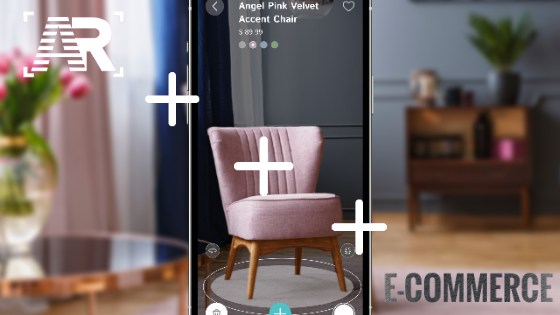Augmented Reality in E-Commerce: Bridging the Gap Between Shopping and Technology
Table of Contents
1. Introduction
2. Understanding Augmented Reality
3. The Rise of Augmented Reality in E-commerce
4. Benefits of Augmented Reality in E-commerce
4.1. Enhanced Customer Experience
4.2. Reduced Product Returns
4.3. Increased Engagement and Interactivity
5. Implementing Augmented Reality in E-commerce
5.1. Choosing the Right AR Technology
5.2. Integrating AR into the Online Shopping Experience
6. Overcoming Challenges and Limitations
6.1. Technical Constraints
6.2. Customer Adoption and Education
7. Successful Examples of Augmented Reality in E-commerce
7.1. Furniture and Home Decor
7.2. Fashion and Apparel
7.3. Beauty and Cosmetics
8. The Future of Augmented Reality in E-commerce
9. Conclusion
10. FAQs
10.1. How secure is augmented reality in e-commerce?
10.2. Can small e-commerce businesses benefit from AR?
10.3. Is augmented reality expensive to implement in e-commerce?
10.4. Are there any privacy concerns with AR in e-commerce?
10.5. Can AR be used for marketing purposes in e-commerce?
1. Introduction
Augmented reality (AR) has been transforming various industries, and e-commerce is no exception. As technology advances, businesses are constantly seeking innovative ways to enhance their customers’ shopping experiences. In this article, we will explore how augmented reality is revolutionizing the e-commerce landscape and the numerous benefits it offers.
2. Understanding Augmented Reality
AR is a technology that superimposes computer-generated elements, such as images, sounds, or videos, onto the real-world environment. It blurs the line between the physical and virtual worlds, providing users with animmersive and interactive experience.
3. The Rise of Augmented Reality in E-commerce
In recent years, the adoption of augmented reality in e-commerce has surged. As consumers demand more personalized and engaging shopping experiences, online retailers have recognized the potential of AR to meet these expectations.
4. Benefits of Augmented Reality in E-commerce
4.1. Enhanced Customer Experience
AR allows customers to visualize products in real-world settings before making a purchase. Whether it’s trying on virtual clothes or previewing furniture in their homes, customers can make informed decisions, leading to higher satisfaction levels.
4.2. Reduced Product Returns
By virtually trying out products, customers gain a better understanding of their size, fit, or appearance. This significantly reduces the likelihood of product returns, saving both customers and businesses time and money.
4.3. Increased Engagement and Interactivity
AR creates an interactive shopping experience that captures customers’ attention and keeps them engaged. Interactive elements, such as games or quizzes, can make the shopping process enjoyable and memorable.
5. Implementing Augmented Reality in E-commerce
5.1. Choosing the Right AR Technology
Selecting the appropriate AR technology is crucial for successful implementation. Businesses must consider factors like compatibility, user-friendliness, and scalability to ensure a seamless experience for their customers.
5.2. Integrating AR into the Online Shopping Experience
The integration of AR into the e-commerce platform should be seamless and user-friendly. Retailers need to provide clear instructions and guidelines for customers to access and use AR features effectively.
6. Overcoming Challenges and Limitations
6.1. Technical Constraints
While AR offers immense possibilities, technical challenges such as processing power and device compatibility need to be addressed for a smooth user experience.
6.2. Customer Adoption and Education
Some customers may be hesitant to use AR due to lack of familiarity. E-commerce businesses need to invest in educating their customers about the benefits and ease of using AR.
7. Successful Examples of Augmented Reality in E-commerce
7.1. Furniture and Home Decor
Several furniture retailers have successfully implemented AR, enabling customers to see how furniture fits into their living spaces virtually.
7.2. Fashion and Apparel
AR has revolutionized the way customers shop for clothes online. Virtual fitting rooms and mix-and-match features allow customers to try on different outfits virtually.
7.3. Beauty and Cosmetics
AR-powered beauty apps let customers virtually try on makeup products, helping them choose the right shades without physically testing them.
8. The Future of Augmented Reality in E-commerce
As technology continues to advance, the future of AR in e-commerce looks promising. The integration of AR with artificial intelligence and data analytics will provide more personalized and intuitive shopping experiences.
9. Conclusion
Augmented reality is reshaping the e-commerce landscape by providing a more interactive, engaging, and personalized shopping experience. Businesses that embrace AR can stay ahead of the competition and build stronger connections with their customers.
FAQs
10.1. How secure is augmented reality in e-commerce?
AR technology is continually improving, and security measures are becoming more robust. E-commerce businesses must prioritize data privacy and invest in secure AR solutions to protect their customers’ information.
10.2. Can small e-commerce businesses benefit from AR?
Yes, AR offers benefits to businesses of all sizes. Small e-commerce businesses can leverage AR to provide unique shopping experiences, build customer loyalty, and increase sales.
10.3. Is augmented reality expensive to implement in e-commerce?
The cost of implementing AR in e-commerce varies depending on the complexity of the solution and the technology used. However, as AR technology becomes more widespread, the costs are likely to decrease.
10.4. Are there any privacy concerns with AR in e-commerce?
Privacy concerns exist with any technology that collects and processes user data. E-commerce businesses must be transparent with their customers about data collection and use, ensuring compliance with relevant regulations.
10.5. Can AR be used for marketing purposes in e-commerce?
Absolutely! AR can be a powerful marketing tool in e-commerce. Brands can create interactive AR campaigns to attract and engage customers, leading to increased brand awareness and sales.

